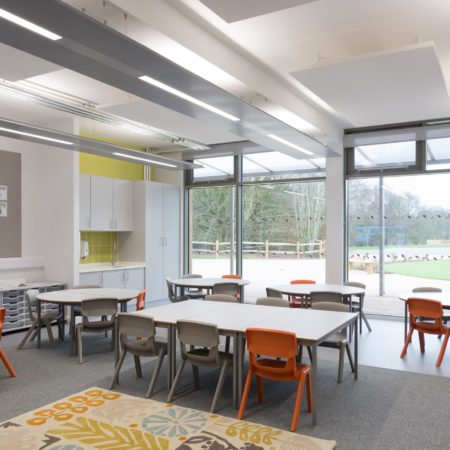Construction Innovation Brings the Ideal Learning Environment Closer to Reality
A new school building programme is an opportunity to implement best design practice, fully involve educators, experts and stakeholders, and get the design for learning environments right.
Teaching professionals should look forward to being liberated from the constraints and compromises imposed by outdated classrooms. The results of the school building project should be an adaptable learning space ideally suited to the full range of teaching methods and preferred learning styles. The new learning environment should be dynamic and inspiring.
For school managers it’s an opportunity to create a space where students can move about easily and efficiently, and where lighting, ventilation and acoustics are fine tuned to enhance learning and minimise distractions.
Well, that’s the theory. The experience of many educators has often been different. For school extensions and rebuilds, new facilities will almost always be better than what went before – but often not all they could have been.
Striving to create something as finely balanced and nuanced as an ideal learning environment wasn’t easy with the traditional construction process with all its interfaces and disconnects.
Innovation Raises Expectations
Innovations in construction technology are transforming expectations from school building programmes. New approaches and products bring the concept of an ideal modern learning environment within reach. This is largely due to the capability to link 3D design models directly to the physical reality of the completed building through a manufacturing-based approach.
The Clever Classrooms study from 2015 identified naturalness, individualisation and stimulation as the main groups of factors that influence the effectiveness of a learning environment.
Naturalness focuses on light, temperature and air quality. These issues are extremely hard to put right if they are not optimised in the initial design concept. Creating optimised designs using the standardised building components in Osborne’s InForm product ensures that the building will perform as designed.
Individualisation relies on flexible floor plans to suit different learning activities and features such as a large wall area free from doors and windows for maximum impact displays. Stimulation comes from classroom floor layouts that are not always square spaces and clever choices of colours, materials and coverings.
Again, the perfect time to experiment and fine tune these details with the help of appropriate experts is when you have a 3D design model, perhaps enhanced with VR.
Changes and enhancements are easy to make at this stage. And the InForm product provides a direct and reliable connection through to the construction process so that what was designed is exactly what is built.
For more information about Osborne’s InForm product for education contact Richard King ([email protected]) or visit our resource centre.

